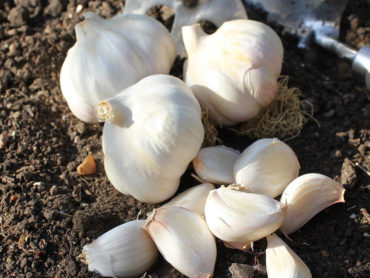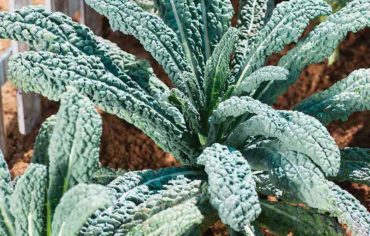French beans are one of the easiest veg to grow from seed and produce a prolific crop in a relatively small space. Whether you choose climbing varieties to add vertical interest to cottage gardens or dwarf varieties for containers, this ornamental vegetable is a versatile choice. Here, experienced allotment grower Lee Senior shares his practical advice on successfully growing French beans.
Want to give it a go? Browse our full range of French bean seeds.
How to choose the best French bean varieties to grow
There are two distinct kinds of French bean; the dwarf French bean and the climbing French bean. Both types come in an array of colours including, green, yellow and purple. Climbing French beans are a little similar to runner beans in their habit, though they’re less vigorous. In good growing conditions they reach heights of around 6ft (180cm), making them ideal for space-saving locations like walls, trellis and arbours. Dwarf French beans, on the other hand, are very different in habit. Low growing, they reach a height of around 30cm making them a good choice for containers and even windowboxes. Here are some of my favourites:
- Try the purple-podded, stringless Dwarf French Bean ‘Purple Queen’ for something reliable and flavoursome. The beans turn green if boiled, but retain some colour if steamed.
- Another variety that I rate highly is Dwarf French Bean ‘Compass’. This superfine bean often forms part of the ‘finest’ range in supermarkets. The flavour is superb and if you could only grow one dwarf type, this would be it!
- Climbing French Bean ‘Blue Lake’ is a traditional, tasty, reliable cropper. Its stringless pods are also great for drying and using over winter. Despite its name it’s actually a white-seeded bean and the favourite of many allotment holders.
- The green-podded Climbing French Bean ‘Cobra’ is a tasty, heavy-cropping variety that also has a long cropping season.
- For something a little different, the yellow-podded Climbing French Bean ‘Sunshine’ fits the bill nicely. This round-seeded variety is striking to look at, pleasantly sweet tasting and its distinctive golden pods are sure to be a talking point!
How to sow French bean seeds

Image: Dwarf French Bean ‘Mascotte’ seeds from Suttons
French bean seeds take an average of 10-14 days to germinate, and require a temperature of 15- 20C (60-68F). I make my first sowing of the year at the end of March in an unheated greenhouse, or a heated propagator if the weather is unseasonably cold. I never sow French bean seeds before this, as there’s nothing to be gained unless you’re growing them to maturity in a polytunnel. You need to be able to guarantee frost-free conditions both outdoors and under glass, as the beans are susceptible to cold.
- In my greenhouse, I sow the seeds in pots of multipurpose compost at a depth of 5cm (2 inches).
- Alternatively, deep seed trays or root trainers are good too.
- Give the compost a good watering but then keep it only lightly moist until growth appears.
- No special conditions are needed, but bean seeds struggle to germinate in temperatures below 10C (50F).
- I make one further greenhouse sowing at the end of April. After that, direct sowing outdoors is the way to go.
- Provided the soil is warm enough, make successional sowings outdoors in their permanent growing positions from mid-May through to mid-July. Add a cane next to each seed for climbers. Space the seeds at 20cm apart and you won’t need to transplant them.
When and where to plant out French beans

Image: Climbing French Bean ‘Blue Lake’ seeds from Suttons
For climbing French beans, always try to choose a non-windy site where possible. This reduces the risk of the plants being desiccated by winds or blown over. As dwarf French beans grow very close to the ground, they’re far less prone to wind damage.
Both types demand a sunny position in well-drained soil that has ideally been manured for a previous crop. Alternatively, dig leaf mould or well-rotted garden compost into the soil to help retain moisture.
Planting the beans outside in their growing positions should only be done when all risk of frost has passed. For much of the UK, this is around the end of May. Hardening off is critical for any plants that have been growing under cover to mitigate the shock of the drop in temperature that outdoor conditions bring. Plants that are subjected to cold soil and cold temperatures will struggle to establish and are at risk of failing.
Space your plants 20cm (8inch) apart and allow 60cm (2ft) between rows. They can be grown in double rows if required. Climbing varieties can be grown up a wigwam, or trellis or even single canes if space is tight. I’ve often used dwarf varieties to haphazardly fill up any spare gaps on my plot, and they’ve always done well.
How to care for French beans

Image: Climbing French Bean ‘Colourful Collection’ plants from Suttons (©Thompson & Morgan)
French beans are easy to grow and are not very fussy. They don’t succumb to many pests, although slugs can never be discounted, especially if the ground is wet at planting out time. Aphids can strike if the plant is under stress but, in my experience, this is very rare.
French beans need warm temperatures to grow to their full potential. For this reason they’re essentially a fair weather, mid-summer crop. They can take a while to get established after transplanting to their final positions, particularly if the soil and air temperatures are on the cold side. Use fleece and cloches where required. The beans will sit and sulk if the soil is too cold.
Both climbing and dwarf French beans are quite fast growers during the warm days of summer if they’re happy where they’re growing. The average time from seed sowing to cropping is an impressive 9-12 weeks, depending on the variety. Water well in hot dry weather, to aid flower setting and improve crop yield.
How to harvest and store French beans

Image: Dwarf French Bean ‘Borlotto Firetongue’ seeds from Suttons
French beans are reliably prolific croppers from mid-July to early October. Regular picking will ensure a longer harvesting period for climbing and dwarf varieties. Both have succulent pods that are tender and delicious to eat, and only take a few minutes to cook.
The pods are easily removed from the plant using the finger and thumb pinching method, or they can be cut by secateurs or scissors. There’s no need to shell them if eating whole, but they can be topped and tailed and cut into sections as required. Harvested beans will last several days in the fridge if they’re stored in a polythene bag. French beans should never be eaten raw. If you have a glut, they can be blanched and then frozen for use during the darker months.
Alternatively, some varieties provide a good crop of beans that can be dried (to make haricot beans) for use in stews, soups or casseroles over winter. Simply allow the pods to turn brown and mature on the plant before shelling the beans. Then leave the beans to dry thoroughly before storing them in a cool, dark, dry place. If you want to grow beans specifically for drying, climbing French Bean ‘Blue Lake’ is a good choice, as well as the striking red dwarf French Bean ‘Borlotto Firetongue’. These mottled red beans look spectacular and children will be fascinated by them.
We hope we’ve inspired you to try growing your own French beans from seed. Find more of Lee’s practical, hands-on, vegetable growing advice over at his monthly allotment pages.
Lead image: Climbing French Bean ‘Cobra’ seeds from Suttons




